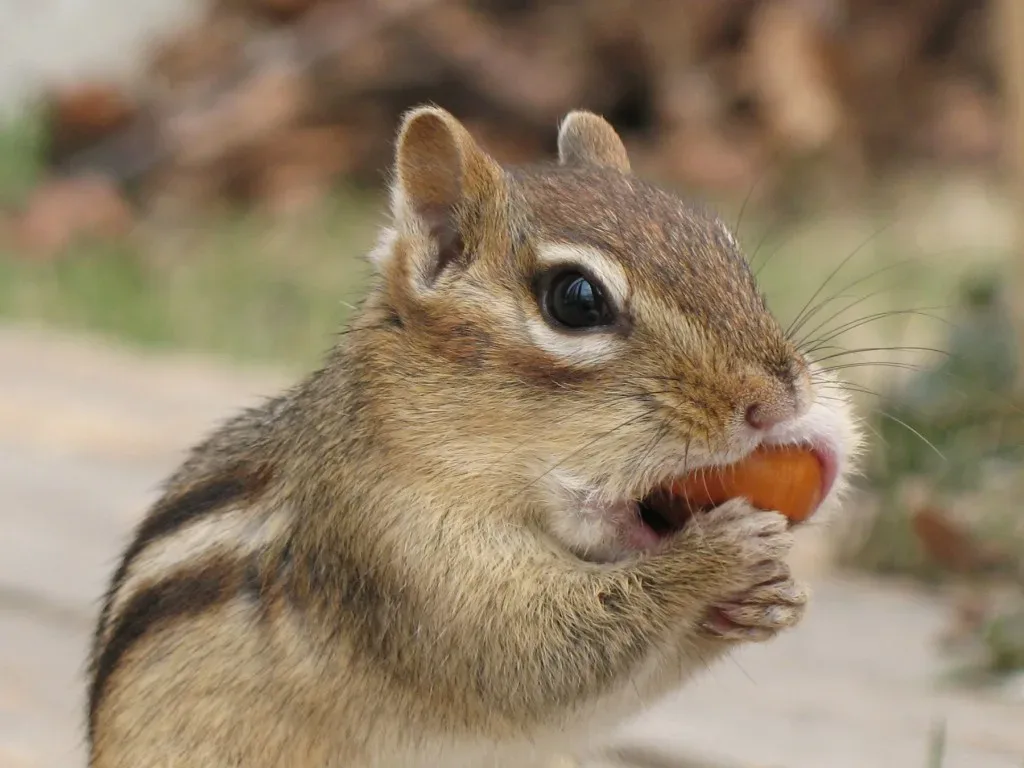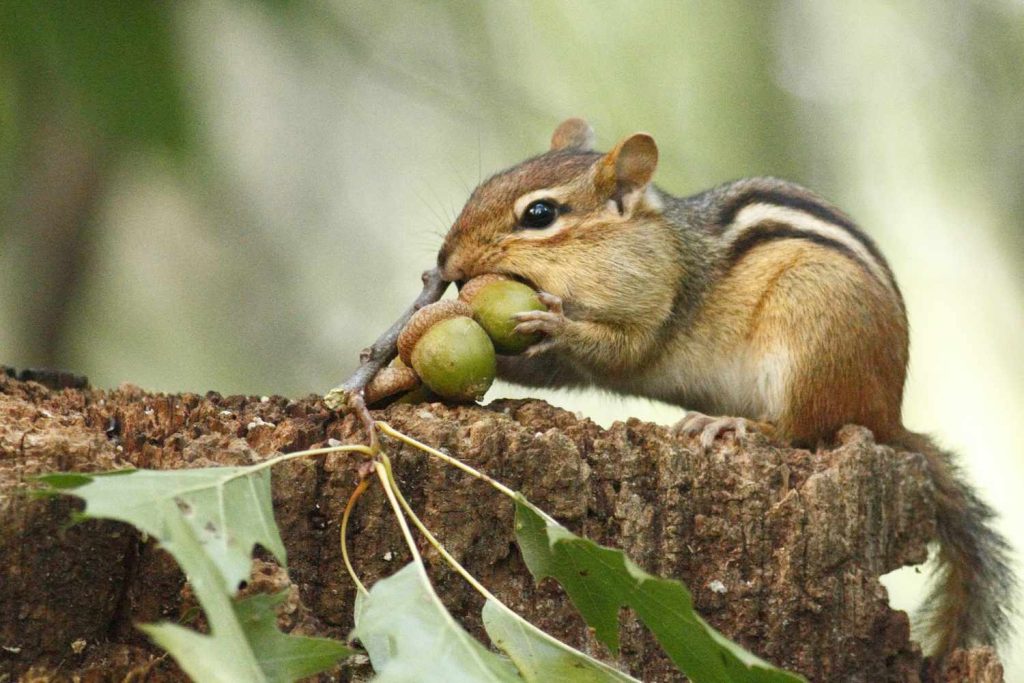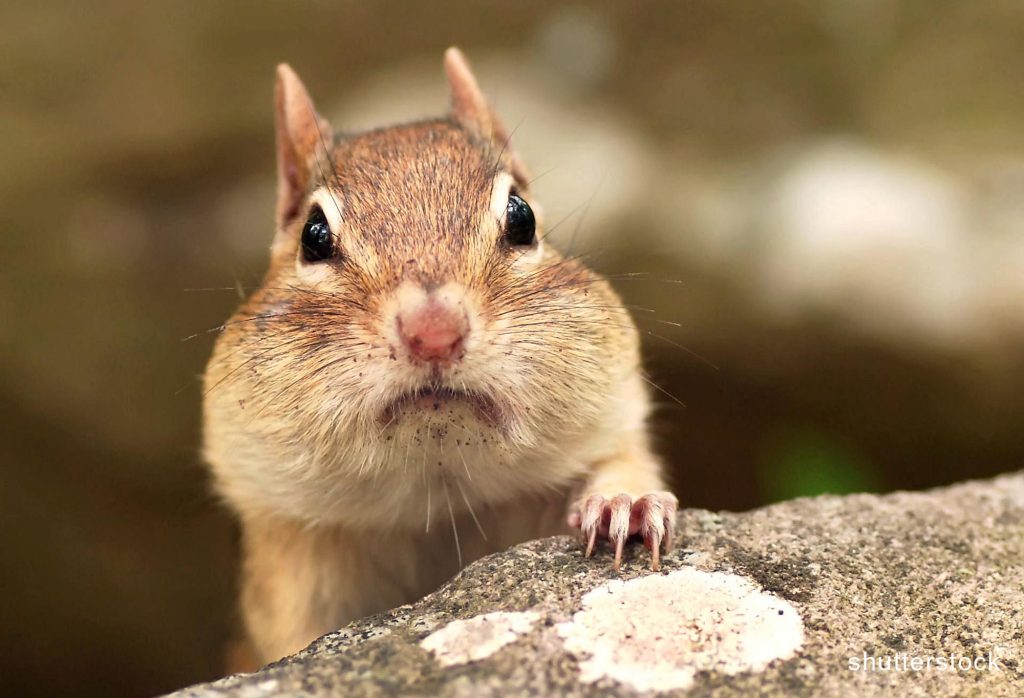Chipmunks are small, adorable rodents that belong to the squirrel family, Sciuridae. They are found across North America and are known for their distinctive stripes, bushy tails and energetic personalities. But despite their popularity, chipmunks are facing a number of challenges in today’s world, and one of the most pressing of these is habitat destruction.
Habitat destruction refers to the process by which natural habitats are destroyed or degraded, typically as a result of human activities such as farming, logging, mining, or urbanization. Such activities can have a devastating impact on chipmunks and other wildlife, as they can lead to loss of food and shelter, fragmentation of habitats, and increased exposure to predators and other threats.
One of the main reasons why habitat destruction is such a problem for chipmunks is that they are highly dependent on their natural habitats for survival. Chipmunks are primarily found in forests, woodlands and grasslands, where they rely on a variety of resources such as seeds, nuts, fruits, and insects for food. They also use these habitats for shelter, foraging, and breeding, and are highly adapted to the specific environmental conditions found in these areas.

However, when habitats are destroyed or degraded, chipmunks are left with fewer resources and less suitable living conditions. For example, if a forest is cleared, the chipmunks that live there might lose their source of food and shelter, and may be forced to move to a new location or face starvation. Similarly, if a grassland is converted into a housing development, chipmunks might find themselves without enough cover to hide from predators or protection from the elements.
Another major problem with habitat destruction is that it often leads to habitat fragmentation. This occurs when large habitats are broken up into smaller, isolated patches by human activities such as roads, buildings, and agricultural fields. When habitats are fragmented in this way, chipmunks and other wildlife are forced to move between these patches, which can be risky and time-consuming. They may also become more vulnerable to predators and other threats, as they are no longer able to move freely across their natural habitats.
In addition to these direct impacts on chipmunk populations, habitat destruction can also have indirect effects on these creatures and their ecosystems. For example, it can lead to changes in the balance of species in an ecosystem, as some animals are better able to adapt to new conditions than others. This can result in the decline of certain species and the proliferation of others, which can have cascading effects on the ecosystem as a whole.
Given the importance of natural habitats to chipmunks and other wildlife, it is essential that we take steps to protect these habitats and prevent further destruction. This can be done in a number of ways, such as through the creation of protected areas, the implementation of sustainable land use practices, and the promotion of wildlife-friendly policies and regulations.
Protected areas are areas of land that are set aside specifically for the purpose of conservation and protection of natural habitats and wildlife. These areas can range from small nature reserves to large national parks and can be found across the world. By designating areas as protected, we can help to ensure that chipmunks and other wildlife have access to the resources and habitats they need to survive.
Sustainable land use practices refer to methods of using the land that minimize negative impacts on the environment and wildlife. These can include practices such as agroforestry, which combines trees and crops to provide habitat for wildlife, and conservation tillage, which reduces soil erosion and helps to maintain healthy soils. By adopting these practices, we can help to mitigate the negative effects of human activities on natural habitats and the wildlife that depends on them.
Wildlife-friendly policies and regulations are laws and guidelines that are designed to protect wildlife and natural habitats from human activities. These can include measures such as zoning regulations to protect natural habitats from development, and laws to regulate hunting and fishing to prevent overexploitation of wildlife populations. By implementing these policies and regulations, we can help to ensure that chipmunks and other wildlife are protected and can thrive in their natural habitats.

The importance of protecting chipmunks from habitat destruction
Chipmunks are small, adorable rodents that belong to the squirrel family, Sciuridae. They are found across North America and are known for their distinctive stripes, bushy tails and energetic personalities. But despite their popularity, chipmunks are facing a number of challenges in today’s world, and one of the most pressing of these is habitat destruction.
Habitat destruction refers to the process by which natural habitats are destroyed or degraded, typically as a result of human activities such as farming, logging, mining, or urbanization. Such activities can have a devastating impact on chipmunks and other wildlife, as they can lead to loss of food and shelter, fragmentation of habitats, and increased exposure to predators and other threats.
One of the main reasons why habitat destruction is such a problem for chipmunks is that they are highly dependent on their natural habitats for survival. Chipmunks are primarily found in forests, woodlands and grasslands, where they rely on a variety of resources such as seeds, nuts, fruits, and insects for food. They also use these habitats for shelter, foraging, and breeding, and are highly adapted to the specific environmental conditions found in these areas.
However, when habitats are destroyed or degraded, chipmunks are left with fewer resources and less suitable living conditions. For example, if a forest is cleared, the chipmunks that live there might lose their source of food and shelter, and may be forced to move to a new location or face starvation. Similarly, if a grassland is converted into a housing development, chipmunks might find themselves without enough cover to hide from predators or protection from the elements.
Another major problem with habitat destruction is that it often leads to habitat fragmentation. This occurs when large habitats are broken up into smaller, isolated patches by human activities such as roads, buildings, and agricultural fields. When habitats are fragmented in this way, chipmunks and other wildlife are forced to move between these patches, which can be risky and time-consuming. They may also become more vulnerable to predators and other threats, as they are no longer able to move freely across their natural habitats.
In addition to these direct impacts on chipmunk populations, habitat destruction can also have indirect effects on these creatures and their ecosystems. For example, it can lead to changes in the balance of species in an ecosystem, as some animals are better able to adapt to new conditions than others. This can result in the decline of certain species and the proliferation of others, which can have cascading effects on the ecosystem as a whole.
Given the importance of natural habitats to chipmunks and other wildlife, it is essential that we take steps to protect these habitats and prevent further destruction. This can be done in a number of ways, such as through the creation of protected areas, the implementation of sustainable land use practices, and the promotion of wildlife-friendly policies and regulations.
Protected areas are areas of land that are set aside specifically for the purpose of conservation and protection of natural habitats and wildlife. These areas can range from small nature reserves to large national parks and can be found across the world. By designating areas as protected, we can help to ensure that chipmunks and other wildlife have access to the resources and habitats they need to survive.
Sustainable land use practices refer to methods of using the land that minimize negative impacts on the environment and wildlife. These can include practices such as agroforestry, which combines trees and crops to provide habitat for wildlife, and conservation tillage, which reduces soil erosion and helps to maintain healthy soils. By adopting these practices, we can help to mitigate the negative effects of human activities on natural habitats and the wildlife that depends on them.
Wildlife-friendly policies and regulations are laws and guidelines that are designed to protect wildlife and natural habitats from human activities. These can include measures such as zoning regulations to protect natural habitats from development, and laws to regulate hunting and fishing to prevent overexploitation of wildlife populations. By implementing these policies and regulations, we can help to ensure that chipmunks and other wildlife are protected and can thrive in their natural habitats.

In conclusion, habitat destruction is a major threat to chipmunks and other wildlife, and it is essential that we take steps to protect these creatures and their habitats. This can be done through the creation of protected areas, the implementation of sustainable land use practices, and the promotion of wildlife-friendly policies and regulations. By working together to protect natural habitats and the species that depend on them, we can help to ensure a healthy and vibrant world for generations to come.